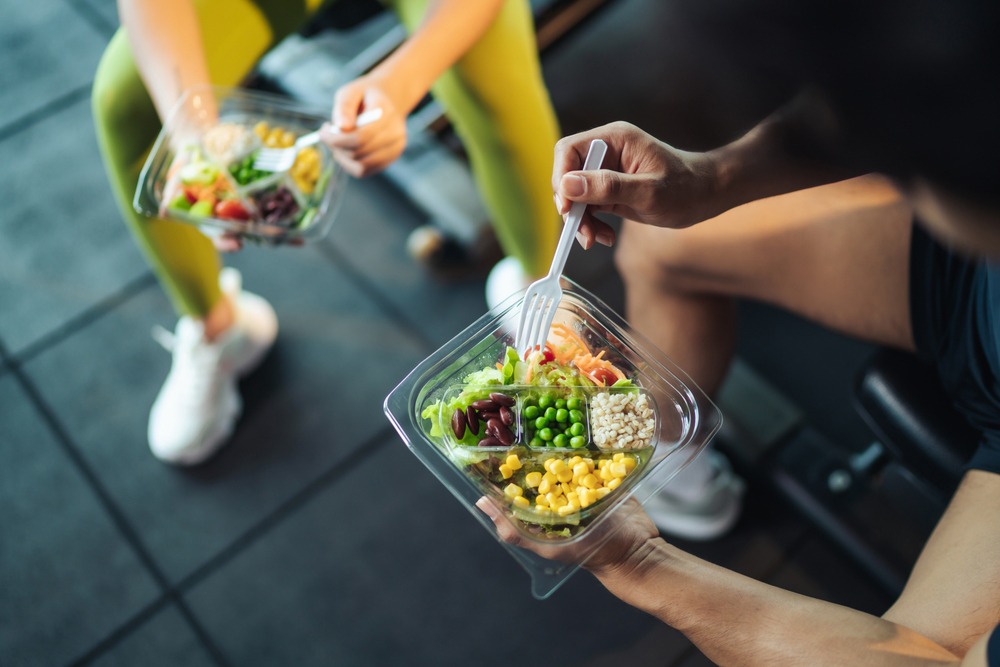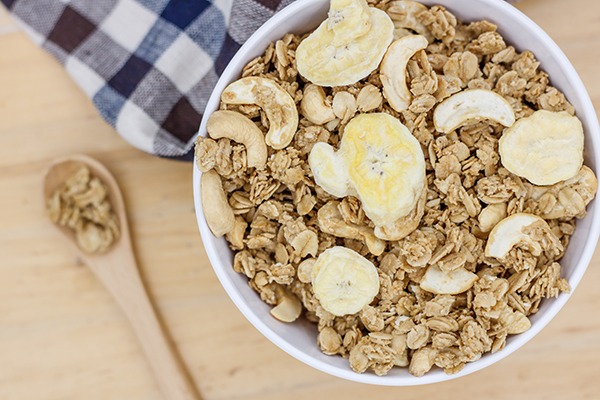Nutrient timing is an approach to fueling where athletes strategize about how to eat before, during, and after training to maximize training effect. This involves choosing the appropriate meal composition, portioning, and timing in relation to your training so it can benefit your training as much as possible. There is a lot that goes into effective nutrient timing, but here, we will explain some of the core principles and some possible applications.
1. Never go too long without eating!
 Have you ever noticed when you go too long without eating, or when you don’t have a consistent eating schedule, you eventually stop noticing when you’re hungry? And once the hunger finally hits, it hits hard. Far too many athletes fall into the pattern of going long periods without eating because they don’t notice their hunger in the beginning of the day, but at night, they wrestle with insatiable hunger that leads to endless cravings and grazing (Skolnik & Chernus, 2010). Long days of under fueling can be followed by long nights of overeating. Athletes wake up bloated and frustrated, often limiting their intake that day to “undo the damage,” and the cycle repeats.
Have you ever noticed when you go too long without eating, or when you don’t have a consistent eating schedule, you eventually stop noticing when you’re hungry? And once the hunger finally hits, it hits hard. Far too many athletes fall into the pattern of going long periods without eating because they don’t notice their hunger in the beginning of the day, but at night, they wrestle with insatiable hunger that leads to endless cravings and grazing (Skolnik & Chernus, 2010). Long days of under fueling can be followed by long nights of overeating. Athletes wake up bloated and frustrated, often limiting their intake that day to “undo the damage,” and the cycle repeats.
Establishing regular, consistent eating patterns can help athletes keep their fuel stores topped off, their hunger and fullness signals regular, and promote more efficient recovery (Skolnik & Chernus, 2010). Regular, consistent eating for athletes may mean eating every two to three hours, including a source of protein and complex carbohydrates each time they eat.
Examples of meals that fit this standard would be avocado toast on whole grain bread (look for 3 grams or more of fiber!) with an egg or two on top, peanut butter on a whole grain waffle (frozen works just as well as homemade!) with Greek yogurt on the side, a turkey sandwich with cheese on whole grain bread, or a smoothie with fruit, milk of choice, and Greek yogurt. Keeping a mental list of “go-to” foods can help reduce the overwhelm that can come from making food choices when hungry, busy, and stressed.
2. Focus on digestibility
There are certain nutrients that are great for general health, but athletes may have difficulty digesting them if they are consumed too closely to exercise. Protein, fiber, and fat are all critical for a variety of bodily functions, but can cause stomach cramps, bloating, and discomfort when athletes eat foods high in these nutrients within 1-2 hours before exercise (Skolnik & Chernus, 2010). Protein foods include meat, dairy, tofu, beans, and chickpeas. High fiber foods include beans, whole grains like quinoa, brown rice, and whole grain bread, chickpeas, fruits, seeds, and vegetables. Foods high in fat include avocados, nuts and nut butters, and seeds.
 So, what should you be eating in this pre-exercise window? Individual preferences may vary, but experts agree that you should primarily focus on carbohydrate-containing foods that are not too high in fiber. For example, lower fiber fruits like bananas, melons, and peaches, lower fiber cereals and granolas, and lower fiber breads and bread-products like bagels and pancakes could be a great choice when you find yourself in this window. Some athletes find they can tolerate some amounts of protein, fiber, and fat as long as the concentrations are not too high.
So, what should you be eating in this pre-exercise window? Individual preferences may vary, but experts agree that you should primarily focus on carbohydrate-containing foods that are not too high in fiber. For example, lower fiber fruits like bananas, melons, and peaches, lower fiber cereals and granolas, and lower fiber breads and bread-products like bagels and pancakes could be a great choice when you find yourself in this window. Some athletes find they can tolerate some amounts of protein, fiber, and fat as long as the concentrations are not too high.
It’s critical to get plenty of protein, fiber, and fat in a day, so athletes should focus on eating foods containing these nutrients outside of the 1-2 hour window before training. Many people find that the more intense the exercise, the more time they need to allow between eating these foods and exercise to avoid gastrointestinal discomfort. Put simply, if you plan to train or compete in the morning, you may need to work extra hard in the afternoon and evening to get protein, fiber, and fat, since you’ll want to limit these foods before and during training. On days when this is not possible, you can use your lower training load days to compensate—getting extra protein, fiber, and fat on days with less intensity can help fill in the gaps.
3. Experimentation is key
As is the case with most nutrition recommendations, individualization is critical and athletes should experiment (on non-competition days!) to see how much food they can tolerate as they get closer to competition, as well as how frequently they need to eat to feel energized and avoid under fueling. Data collection can be helpful here, so take note of what foods work well for you for different types of workouts. The more you know, the better informed your decisions!
Read more Spirit of Sport blog posts



